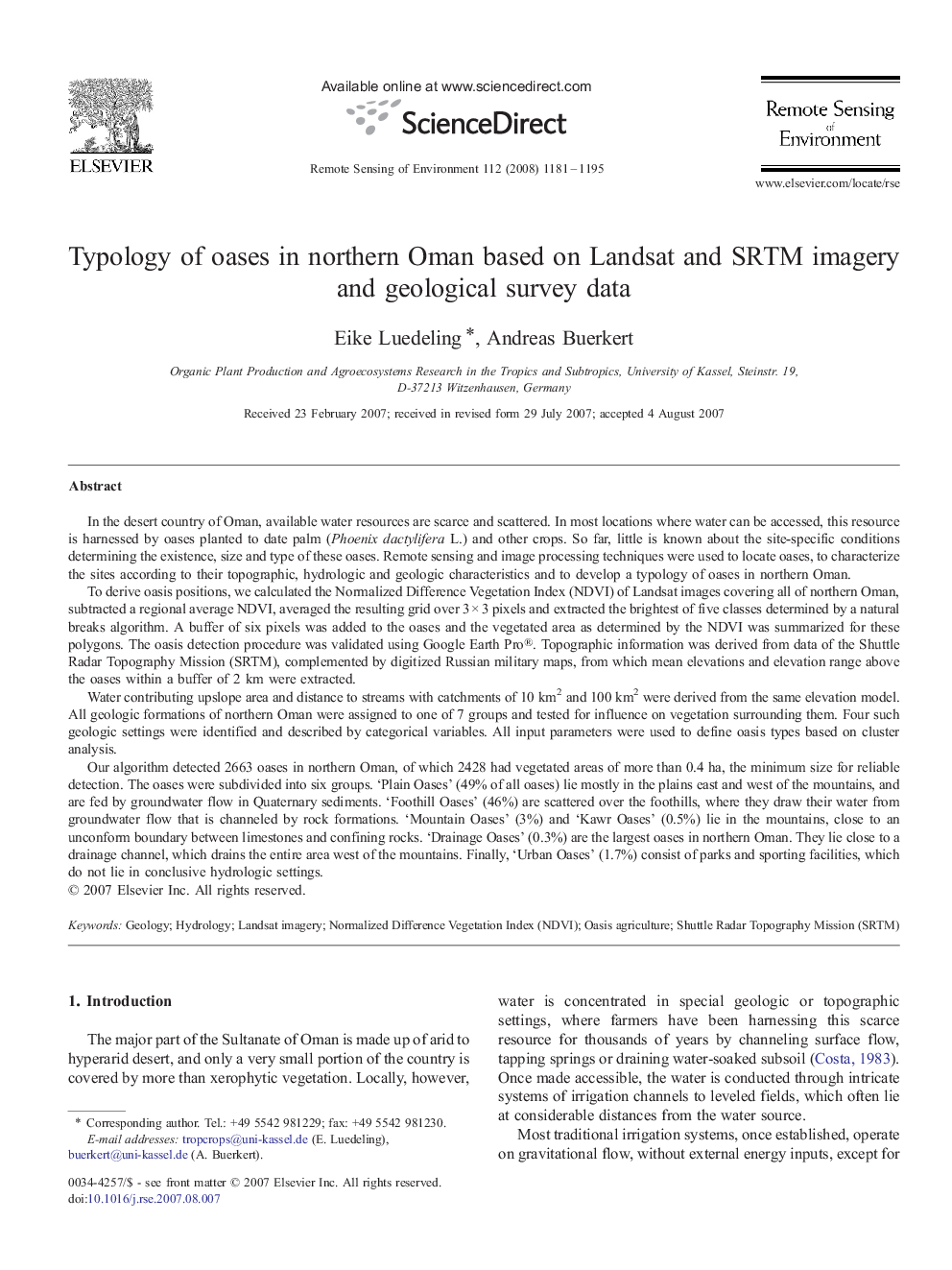| کد مقاله | کد نشریه | سال انتشار | مقاله انگلیسی | نسخه تمام متن |
|---|---|---|---|---|
| 4460478 | 1621331 | 2008 | 15 صفحه PDF | دانلود رایگان |

In the desert country of Oman, available water resources are scarce and scattered. In most locations where water can be accessed, this resource is harnessed by oases planted to date palm (Phoenix dactylifera L.) and other crops. So far, little is known about the site-specific conditions determining the existence, size and type of these oases. Remote sensing and image processing techniques were used to locate oases, to characterize the sites according to their topographic, hydrologic and geologic characteristics and to develop a typology of oases in northern Oman.To derive oasis positions, we calculated the Normalized Difference Vegetation Index (NDVI) of Landsat images covering all of northern Oman, subtracted a regional average NDVI, averaged the resulting grid over 3 × 3 pixels and extracted the brightest of five classes determined by a natural breaks algorithm. A buffer of six pixels was added to the oases and the vegetated area as determined by the NDVI was summarized for these polygons. The oasis detection procedure was validated using Google Earth Pro®. Topographic information was derived from data of the Shuttle Radar Topography Mission (SRTM), complemented by digitized Russian military maps, from which mean elevations and elevation range above the oases within a buffer of 2 km were extracted.Water contributing upslope area and distance to streams with catchments of 10 km2 and 100 km2 were derived from the same elevation model. All geologic formations of northern Oman were assigned to one of 7 groups and tested for influence on vegetation surrounding them. Four such geologic settings were identified and described by categorical variables. All input parameters were used to define oasis types based on cluster analysis.Our algorithm detected 2663 oases in northern Oman, of which 2428 had vegetated areas of more than 0.4 ha, the minimum size for reliable detection. The oases were subdivided into six groups. ‘Plain Oases’ (49% of all oases) lie mostly in the plains east and west of the mountains, and are fed by groundwater flow in Quaternary sediments. ‘Foothill Oases’ (46%) are scattered over the foothills, where they draw their water from groundwater flow that is channeled by rock formations. ‘Mountain Oases’ (3%) and ‘Kawr Oases’ (0.5%) lie in the mountains, close to an unconform boundary between limestones and confining rocks. ‘Drainage Oases’ (0.3%) are the largest oases in northern Oman. They lie close to a drainage channel, which drains the entire area west of the mountains. Finally, ‘Urban Oases’ (1.7%) consist of parks and sporting facilities, which do not lie in conclusive hydrologic settings.
Journal: Remote Sensing of Environment - Volume 112, Issue 3, 18 March 2008, Pages 1181–1195